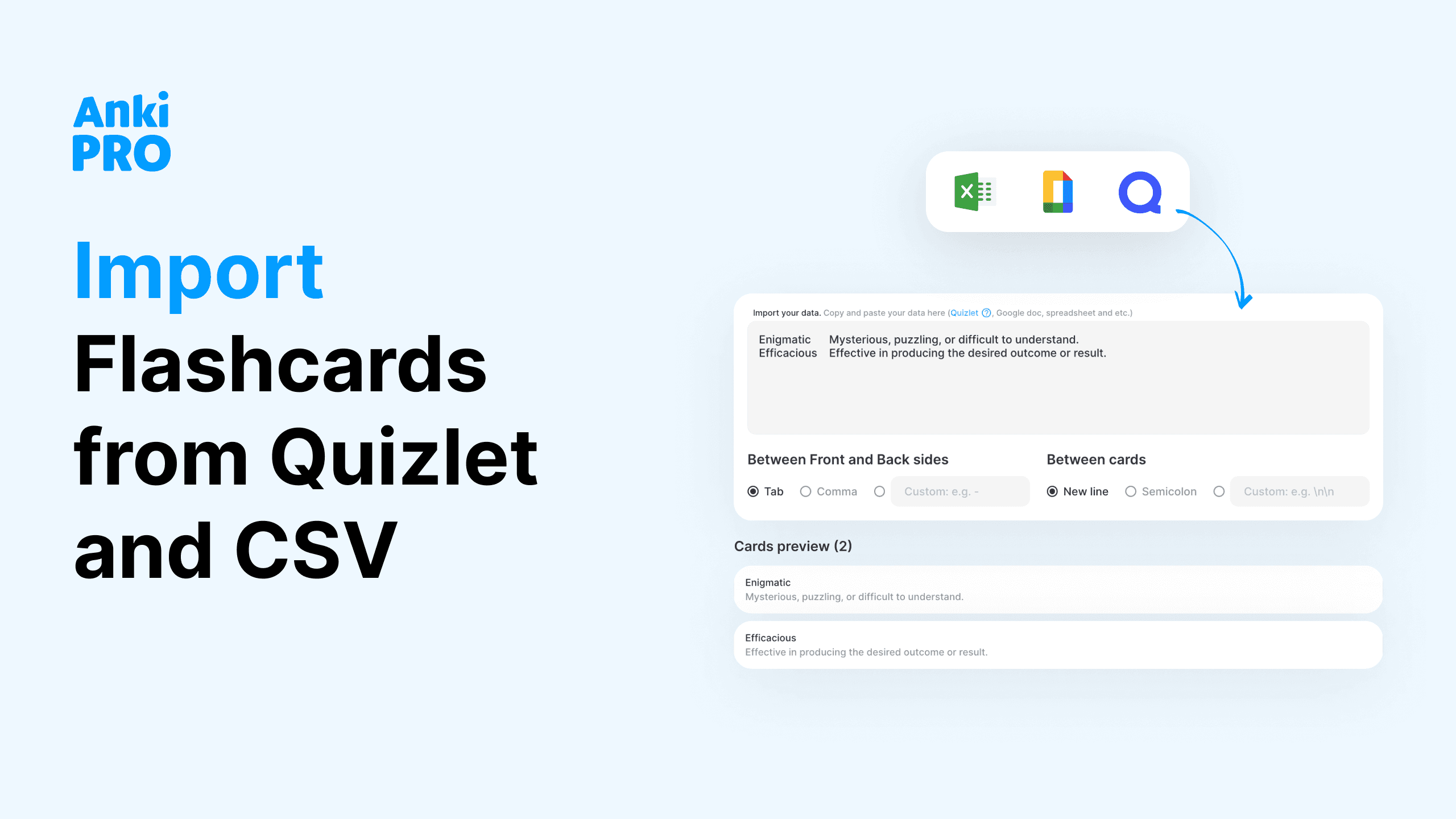Dyslexia is the most common learning disability. It’s estimated to affect 3-7% of people worldwide. People with dyslexia struggle with reading, writing, and spelling. These difficulties can also lead to trouble learning, grammar, reading comprehension, and delays in developing vocabulary. Dyslexic students are just as bright and motivated as anyone else and can succeed academically with the right support.
In this article, we’re going to break down
- What dyslexia looks like
- The diagnostic process and possible causes of dyslexia
- What accommodations can help dyslexic students
- Study tips to help dyslexic students succeed
Whether you’re a parent, teacher, or dyslexic student yourself, help and resources are out there.

What Are the Dyslexia Signs?
What dyslexia looks like varies by age. Adults often notice the signs in children who are first learning how to read. Early reading attempts can differ from the majority of kids. However, there can be signs in early childhood that suggest problems with the logic behind reading before the child has learned how. Other students fly under the radar or struggle without knowing why until high school or adulthood.
Early childhood and preschool
Small children who don’t know how to read yet can show signs of dyslexia. They’re not obvious it you don’t know what to look for. Mispronouncing words could be a sign that they have trouble remembering sounds. Not remembering the names of common things could mean a disconnect between words and concepts. Difficulty following directions or remembering sequences could also signal that disconnect. For very young children this could show up as not knowing the words to nursery rhymes or childhood songs and telling stories that are hard to follow.
Early elementary school
There are plenty of reasons why a kindergartener might struggle learning to read. It could be dyslexia, but it also could be another disorder. Or this child might just be a late bloomer. Dyslexia is a likely cause if they have trouble naming letters and matching them to the sounds they make or confuse letters that look alike. Later on, dyslexic kids might struggle to remember familiar words, substitute words when they’re reading aloud, or have a hard time pronouncing words.
Late elementary school
As children get a little older, dyslexia looks different on them. Undiagnosed dyslexic students in third through fifth grade may get anxious and frustrated about reading. They might struggle with sounding out new words or remembering sight words. When reading out loud, they may skip words or substitute them for words they know. Adults may notice patterns in their spelling mistakes or that they struggle to summarize directions or stories. Sometimes dyslexia occurs along with other mental health conditions during brain development. The British Dyslexia Association offers support and resources for those with developmental dyslexia and specific learning disabilities. A comprehensive evaluation of these conditions considers various brain processes, identifying risk factors and tailoring interventions accordingly.
Middle school and high school
Not every dyslexic person is diagnosed early. Plenty of teenagers, pre-teens, and even adults struggle with reading for a long time without knowing why. These struggles won’t look the same as they do with younger kids. An older undiagnosed dyslexic may read slowly or prefer listening to content over reading it. Not getting jokes or understanding idioms when their peers do can have many explanations. Dyslexia is one of them. Same goes for understanding verbal communication better than written language.
If any of these signs sound like you, your child, or your student, it could be dyslexia. The next step to find out would be to pursue a diagnosis. To sum up, we have reading difficulties, poor writing skills, trouble with word recognition, and spoken language insecurities. Early identification of dyslexia is key to making children with dyslexia learn more efficiently and accept their special education format.

How Is Dyslexia Diagnosed?
The only way to know for sure if you or a child in your life have dyslexia is through a full evaluation. This may sound intimidating, but you have options for getting it done.
The Individuals with Disabilities Education Act (IDEA) requires public schools in the United States to evaluate students that they suspect of having learning disabilities free of charge to their families. This evaluation will determine what special education services the child may need. Private evaluations are another option, but they’re not always covered by health insurance and can be expensive. Teaching hospitals and psychology departments at universities often offer free or low-cost evaluation programs.
The evaluation process may involve an academic achievement test, sometimes an IQ test, a review of past academic performance, a medical history review, a physical exam, and a neurological exam.
What are the causes of dyslexia?
We don’t know for sure what causes dyslexia, but research shows that genetics and physical brain differences play a role. 40% of siblings of children with dyslexia struggle with reading. 49% of parents of dyslexic children also have trouble with reading, whether they’re diagnosed or not. Studies have also found that dyslexic people’s brains look different on MRIs than non-dyslexic brains.
Dyslexia is also likely to be comorbid with similar learning disabilities dyscalcuila and dysgraphia. Dyscalculia is commonly known as “math dyslexia” and dysgraphia affects handwriting and fine motor skills.
What Accommodations Do Dyslexic Students Need?
With accommodations, dyslexic students can succeed academically. Some students and parents will be able to clearly articulate what they need to bridge the gap. Others may not know until they experience it and see the difference for themselves. Not every idea on this list will help or be necessary for every dyslexic student, it’s just some ideas to get you started. And remember, accommodations are not special treatment. They’re a way to level the playing field for students with disabilities.

Classroom routine
The typical classroom routine isn’t often the best for dyslexic students. Changes that could help them thrive include:
- Posting visual schedules and also reading them out loud
- Allowing extra time for reading and writing assignments
- Giving them multiple opportunities to read the same text
- Allowing partner work for reading and writing
Course materials
There are tools that can help dyslexic students study better. Some are technology-based, others are physical items. Keep these on-hand if you have a dyslexic student:
- Letter and number strips (to focus on one line at a time)
- Large-print books and audiobooks
- Text-to-speech or speech-to-text software
- Books on high-interest topics for students reading below grade level (also known as “hi-lo books”)
Giving instructions
Small changes in the way you give instructions can make a big difference for dyslexic students. This could mean:
- Reading all written instructions out loud
- Giving the student simplified instructions
- Highlighting key words on worksheets ahead of time
- If possible without disrupting the flow of the class, privatley asking the students to repeat instructions to make sure they understand
- Breaking large assignments into smaller pieces. This could mean a series of smaller deadlines for big projects, outlining assignments, et cetera
- Providing guiding questions and self-monitoring checklists
Introducing new concepts
Dyslexic students and other neurodivergent students often take longer to learn new material than their neurotypical peers. Here are a few ways to help bridge the gap:
- Outlining of the lesson to help with taking notes
- Providing a glossary of new terms and key concepts
- Using visual or audio support whenever necessary
Tests and assignments
Tests and graded assignments are usually a big part of a students’ grade, so accommodations in these areas can make a big difference. These may include:
- Offer alternative ways to demonstrate understanding (oral reports, presentations, posters, etc.) This could be a good idea for general students too
- Telling students the test format in advance
- Allow extra time on tests
- Provide a quiet room for tests
Students and parents, if anything on this list sounds helpful, don’t hesitate to ask teachers to provide it. This could mean adding it to an Individualized Education Plan (IEP) or simply asking.

7 Study Tips for Students with Dyslexia
A lot of mainstream study tips are written with neurotypical brains in mind. Here are a few tips that students with dyslexia may find helpful:
#1: Create a routine
Want to make studying as easy and comfortable as possible? Create a routine and stick to it. And you don’t have to be strict with yourself to make it happen. Get in the habit of studying at the same time when you’re awake and alert every day. It doesn’t really matter when that is. If you need a break when you get home from school, there’s no need to pressure yourself to study right away. What matters is that you’re consistent about it. It will get easier over time.
#2: Curate your study space
The time when you study isn’t the only thing that can make studying as easy and comfortable as possible. Where you study matters too. Whether it’s in your bedroom, at the kitchen table, or the library, consistently study in a spot where you can be comfortable and productive. Keep distractions out and keep everything you need for the assignment in.
#3: Plan ahead
When you’re studying and doing homework, it’s important to give yourself plenty of time. Rushing through reading and writing assignments will only make them more stressful. Plan ahead as much as you can and work as slowly as you need to. If your workload is overwhelming, focusing on the assignments that are due sooner first and outlining tasks before you do them can make the mountain look more scalable. If you don’t have homework that night, it’s not too early to look ahead and prepare for upcoming tests.
#4: Use flashcards
Flashcards can be a great study tool for dyslexic students. They’re focused on the information you need without anything else on the page. Old-school physical flashcards can do the job, but digital flashcards can be even better. It takes less time to make your deck and you can use cool features to strengthen your associations like:
- Pictures and diagrams
- Text-to-speech feature
- Spaced repetition algorithms
Spaced repetition is a method of timing your reviews to fight the forgetting curve. It starts by repeating the material often, then you review it less and less just to make sure you still remember it. At Anki Pro, everything is made to ease the lives of people with dyslexia.
#5: Make technology your study buddy
Words on a page can feel like your worst enemy when you have dyslexia. Using assistive technology can help make words less intimidating. This could mean listening to audiobooks, taking notes with dictation software, and typing assignments whenever possible. When you’re reviewing information, try making a powerpoint of the material you need to know. This doesn’t just test what you know, but pairing the words with visuals can strengthen your associations with the subject.
#6: Work with your teachers
Talking through the material with your teachers and asking for the format of the test ahead of time are good places to start. If you’re in college, take advantage of your professors’ office hours. If any of the accommodations earlier in this article sound like they could be helpful to you, ask your teachers to provide them.
Innovative teaching methods tailored to people with dyslexia might improve reading skills, phonemic awareness, and overall reading fluency. This specific learning disorder requires emotional support. Check out a Dyslexia association in your country to see how people with dyslexia can seek proper help for studying or working with learning problems.
#7: Seek out other resources
Your teachers aren’t the only people at your school who can help you out. Find out if your school offers free tutoring programs. If not, look into options that fit your budget in your area. Most college campuses have a writing center, where tutors help you write papers by talking through your ideas and giving feedback. Joining or creating a study group can also be a great resource. You and your classmates can help each other out and make studying feel less lonely.

Work with Your Brain, not Against It
Remember that just because it might take you longer to do some things than your peers doesn’t mean you can’t do them well. Comparing yourself to others is doing yourself a disservice. Learning how to accommodate yourself can help you shine in your own way. Knowing what you need to study well can help you advocate for the accommodations you need in the classroom. Connecting with the dyslexic community can also remind you that you’re not alone and become a source of advice from people who get it. You may get discouraged, after all, everyone does. When that happens, say or write down some things you do well. With the right support and study plans, your brain can be your friend.
How Can Teachers Support Dyslexic Students?
Many dyslexic students take a combination of special ed and regular ed classes. Others take regular ed classes with accommodations in the classroom. A core principle of IDEA is that students with disabilities should learn alongside their peers as much as possible. That way students can interact with all kinds of peers and also get the focused support that they need.
The best thing you can do for dyslexic students, or any students with neurodevelopmental disorders, is to aim to understand them, not “fix” them. Follow their IEP and give them their accommodations. Talk to them about their struggles, what they do well, and their hopes for the future. Learn about the experiences of dyslexic adults to understand the range of possibilities for your students. And don’t let assumptions limit their reality.











